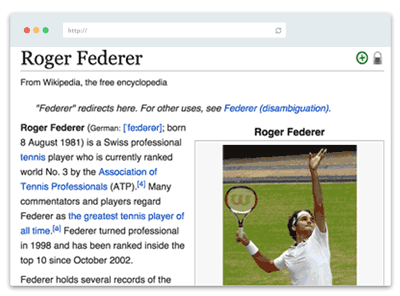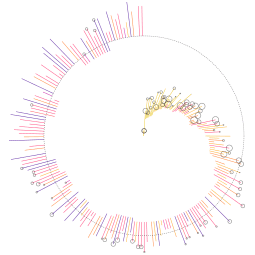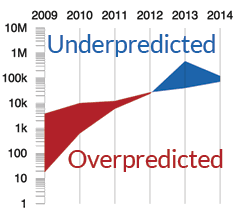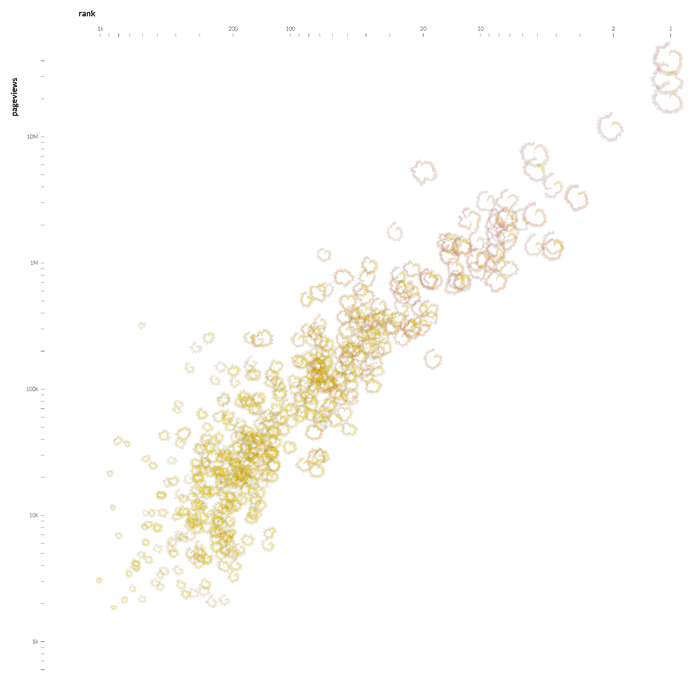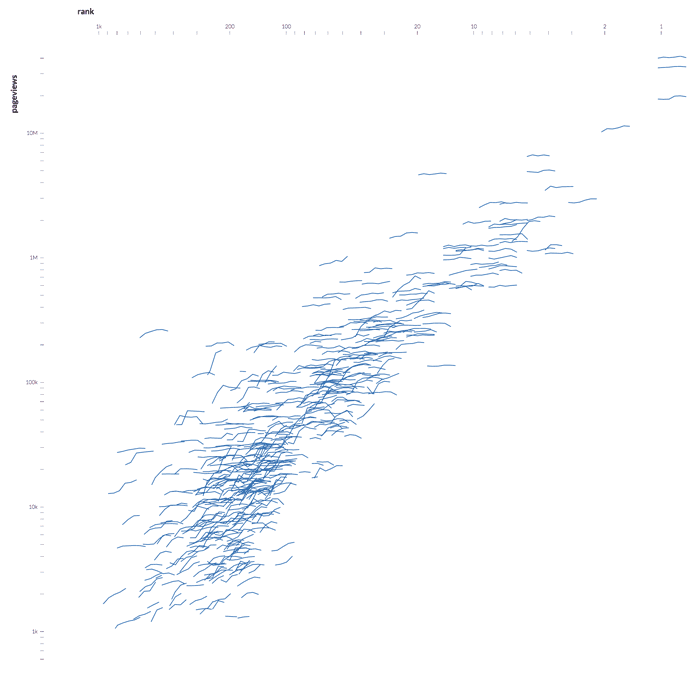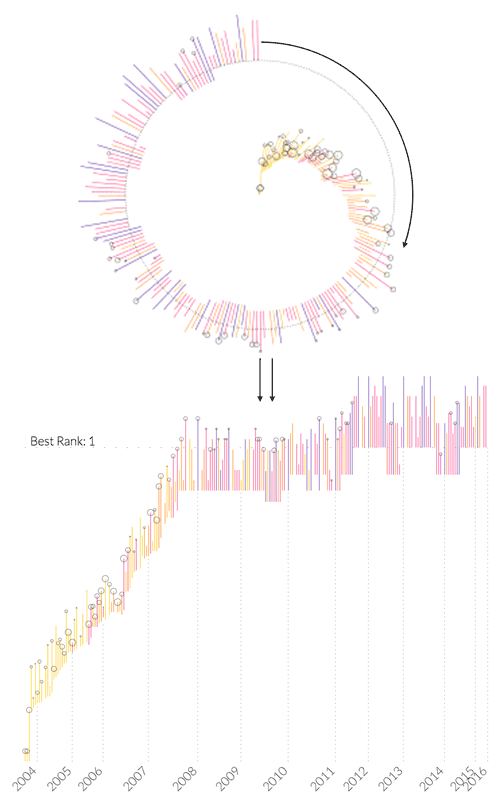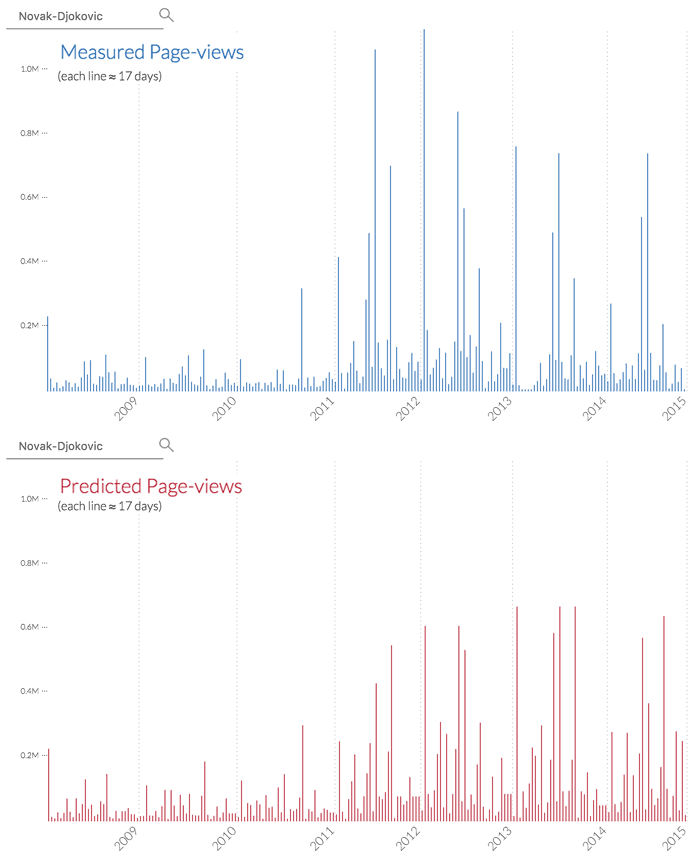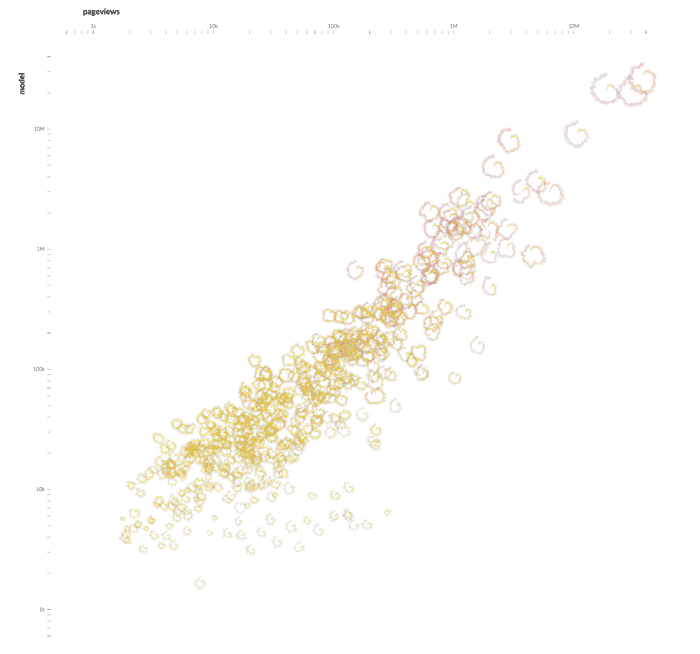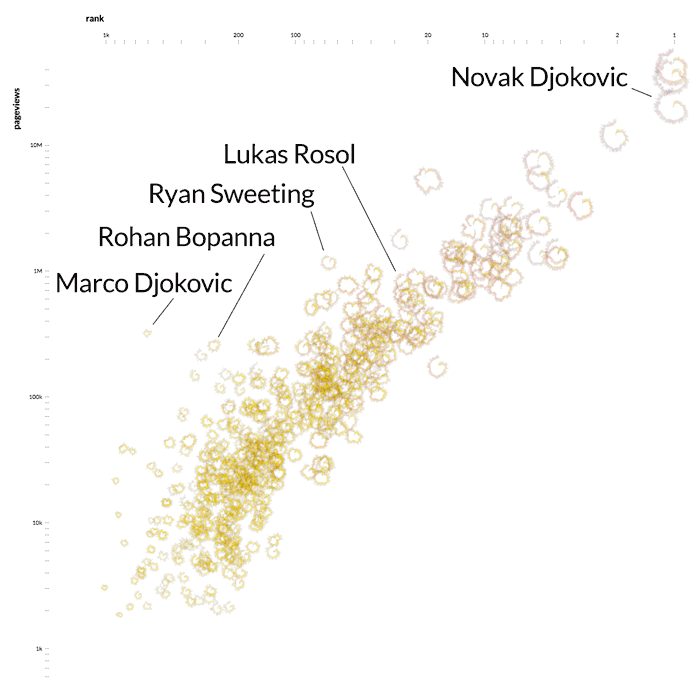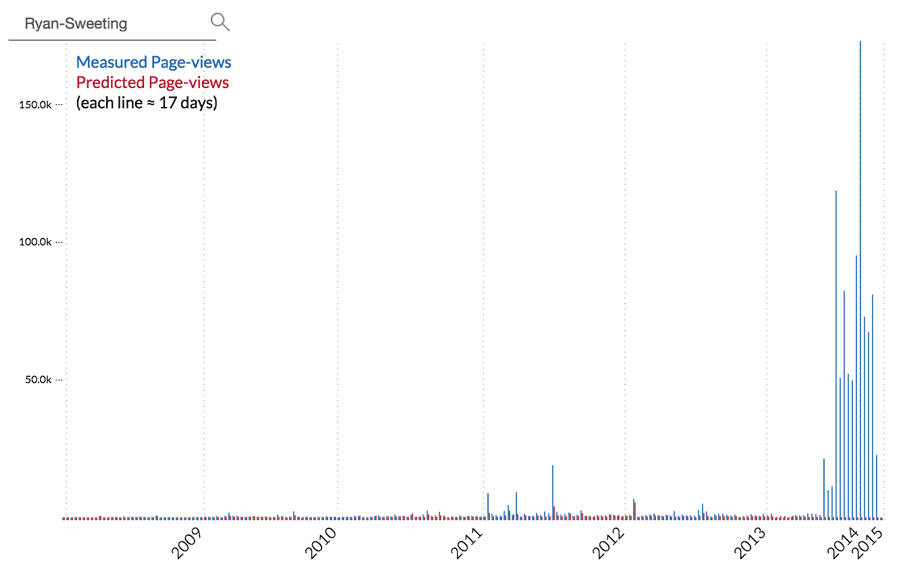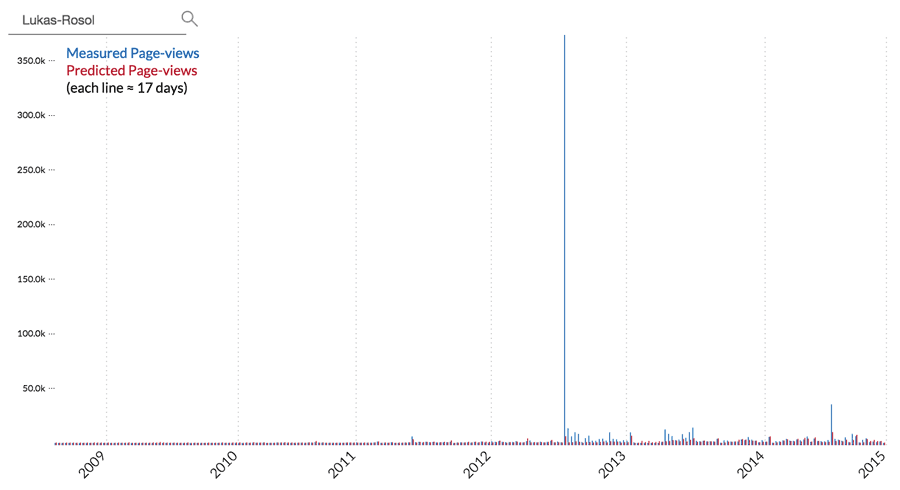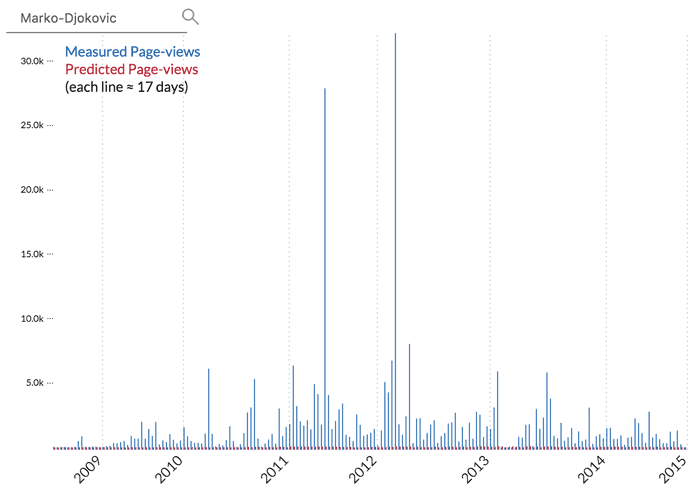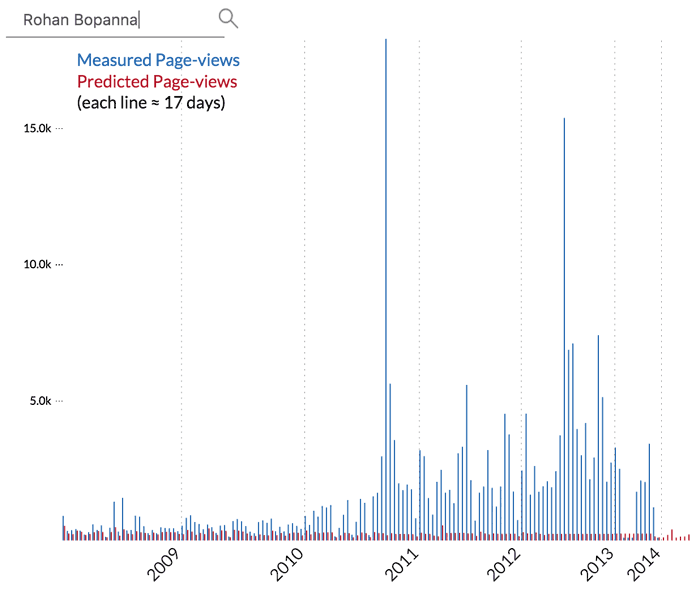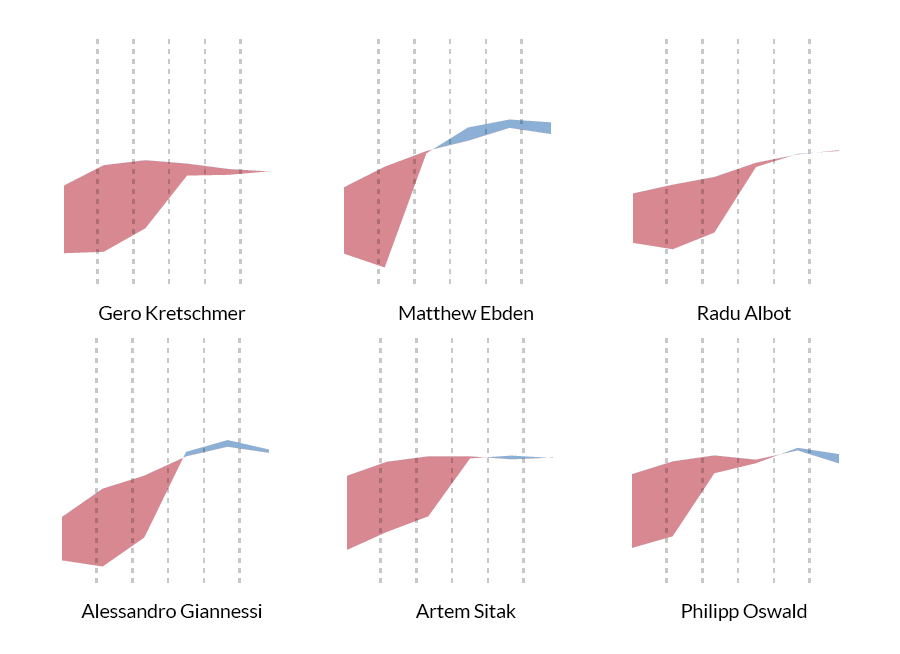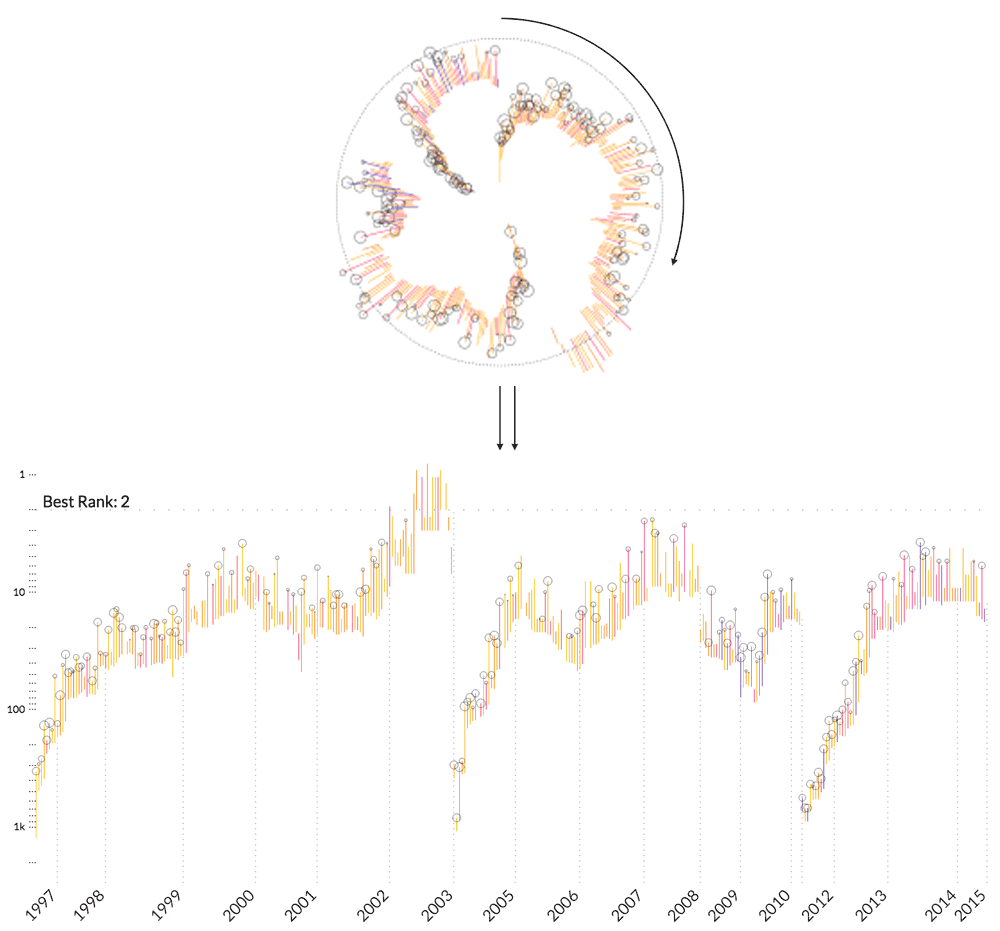Data
The data behind this project consist out of two main parts. Performance data from Tennis players as well as their Wikipedia page-views.
Performance
We started with all players from the Association of Tennis Professionals who were active any time between the years 2009 and 2015. For those, we recorded all of their career performance data, including their weekly place in the rankings, the dates and names of all the tournaments they attended, how many score points those tournaments were worth, how many matches they played in those, against whom and what the result was.
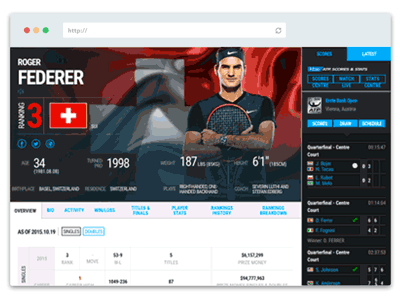
Popularity
From those players we selected the ones who were famous enough to have their own Wikipedia page at any time during the same period. After eliminating those sharing a name with some other famous person to avoid confusion, we ended up with about 500 players. As a proxy for how popular those players were, we used the number of page-views of their Wikipedia articles. We collected all instances someone clicked on those pages and aggregated them for periods of approximately 17 days to see if the ebbs and flows of activity would match the tournaments.
